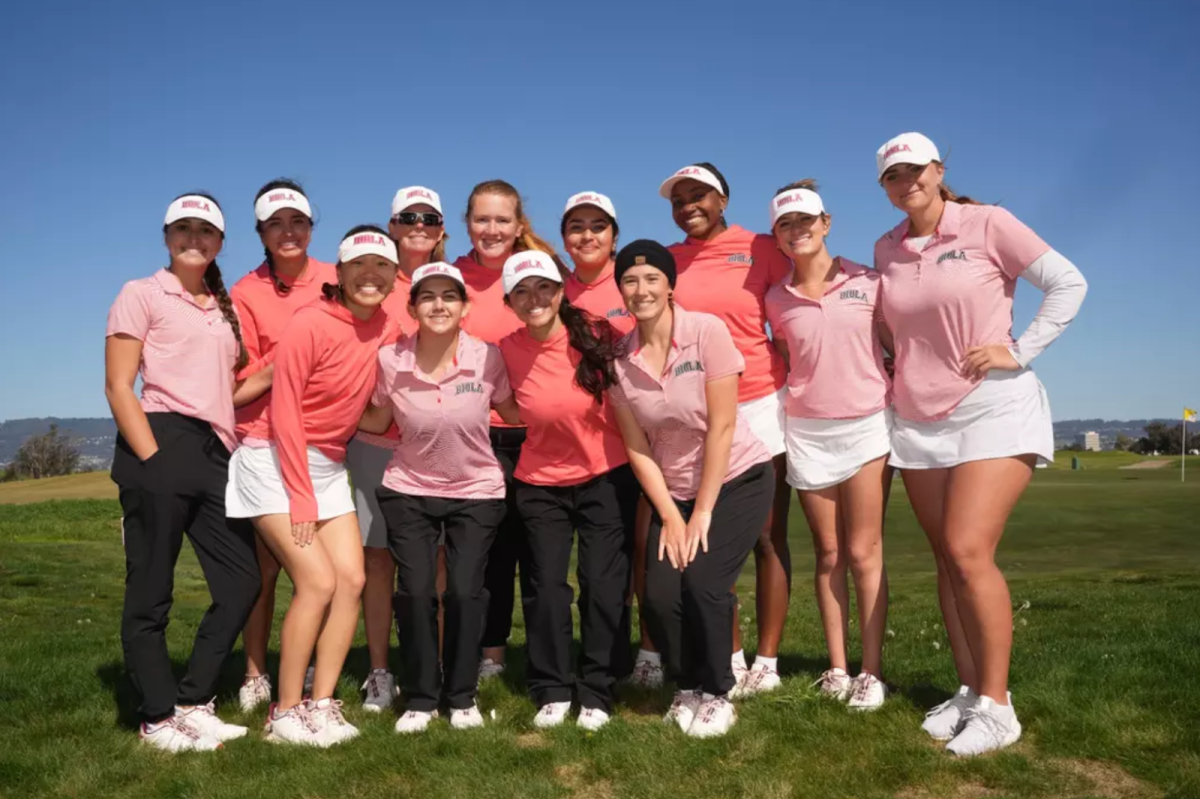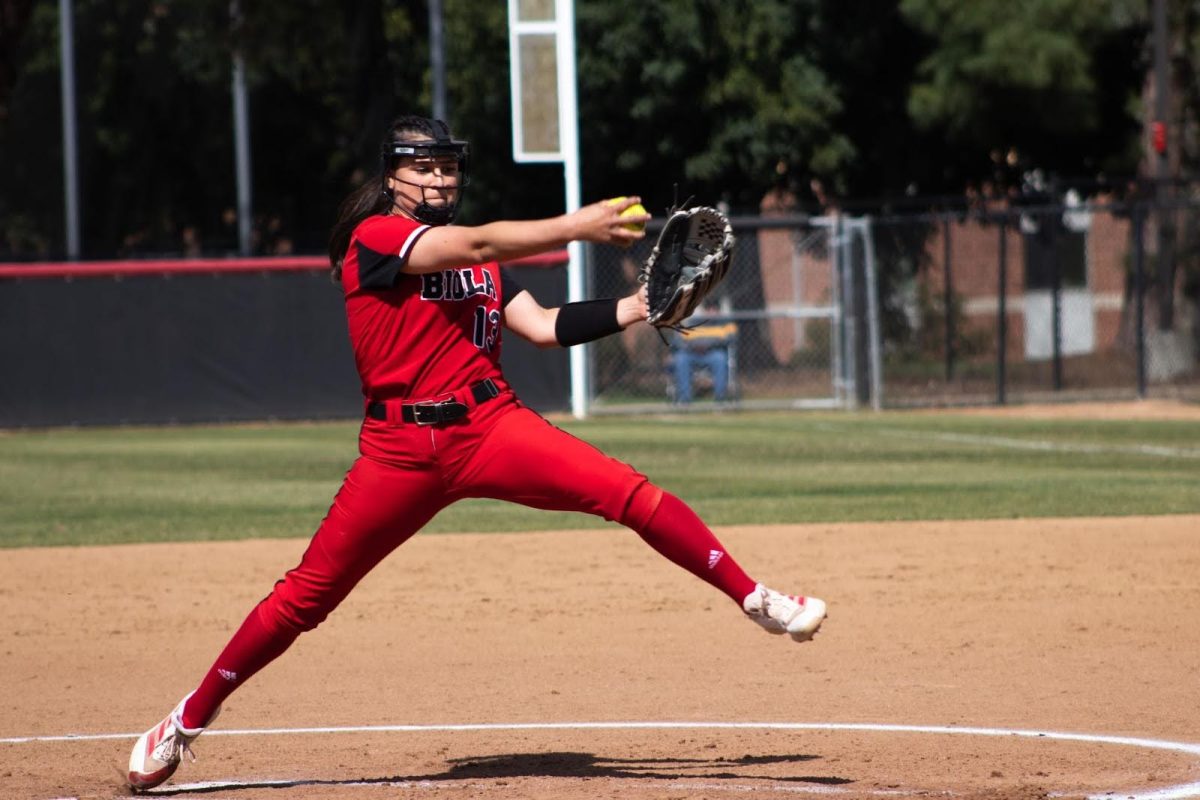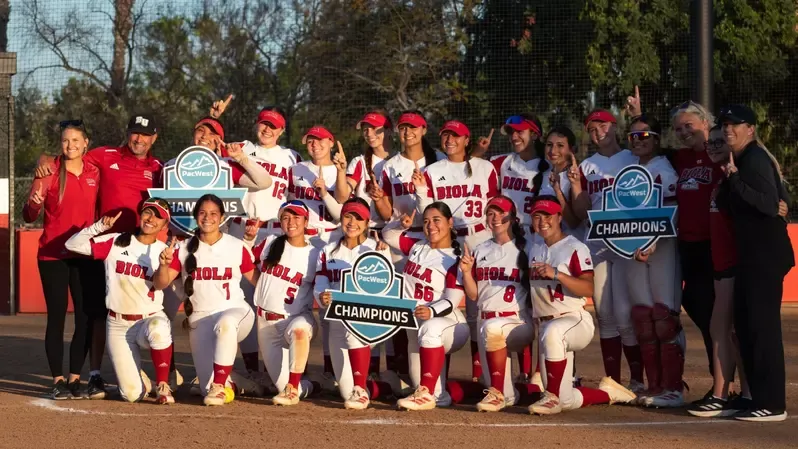The Golden State Athletic Conference may shrink from 11 teams to seven over the period of the next two years due to teams transferring to the National Collegiate Athletic Association Division II, but Biola is staying put.
As a coach for more than 30 years and an inductee to the National Association of Intercollegiate Athletics Hall of Fame as of 2002, athletic director and men’s basketball coach Dave Holmquist has experienced many different situations in the league. As he sat in his office with its award-covered walls and trophy-cluttered shelves, Holmquist calmly cleared up the speculation that has recently surrounded the possibility of a shrinking GSAC, which is affiliated with the National Association of Intercollegiate Athletics Division I.
Cal Baptist leaves NAIA
It all began with a phone call on July 12, 2010. California Baptist University’s membership into the NCAA Division II had officially been confirmed. That was one down. This July, the GSAC will find out whether or not three of the top schools in the conference, Azusa Pacific University, Fresno Pacific University, and Point Loma Nazarene University, will also exit the NAIA. That will be three more.
Freshman Biola basketball player Kyle Bailey represents many athletes who would be disappointed if this were to happen.
“It’s definitely a bummer … the rivalry with Azusa and the competition with other schools is so great, it makes basketball so much more enjoyable to watch and to play,” he said.
If the other three teams leave the GSAC, Bailey will most likely not have an opportunity on a regular basis to compete against several of the teams he expected to when he chose to attend Biola.
Weighing options
Amidst all of the hype and speculation that has recently encompassed the GSAC within the past few years concerning teams that are planning to transfer to the NCAA Division II, Biola has been quietly observing the situation from the outskirts.
While some schools may be panicking about this domino effect of transferring schools, Holmquist feels that there is no need to rush into this decision, though Biola is weighing the options.
“There are some strengths and there are some weaknesses with either direction that you go,” he said.
He also pointed out that there are many things to consider, like the increased traveling for Cal Baptist student-athletes means missing a significantly larger amount of class time.
Cal Baptist will join the Pacific West Conference, which is affiliated with the NCAA Division II, for the 2011-2012 athletic season. The conference currently consists of teams from Arizona, Utah, northern California, and Hawaii, which translates to pricey travel expenses and extensive periods of time on the road. Apart from these facts, everything else is mere speculation.
GSAC may lose three more teams
Since Azusa Pacific, Fresno Pacific, and Point Loma are still engaging in the yearlong application process, they will remain in the GSAC until at least the end of the 2011-2012 athletic season, Holmquist said. He added that there are around 20 NAIA teams applying to become members of the NCAA Division II before the June 1 deadline, but the league will only be accepting eight of them.
The GSAC will consist of 10 teams for the 2011-2012 athletic season because of the loss of Cal Baptist. The possibility that the other three teams will be accepted into the NCAA will reduce the GSAC to seven schools for the following year.
Consequently, questions have arisen about the future of the conference. However, Staci Schottman, the director of public relations and communications of the NAIA, thinks it is too early in the application process to make any predictions.
“Applications are not due to the NCAA until June and decisions by the NCAA are not made until July so at this time, it really would be premature to speculate,” she said.
Worries about competitiveness
Like Biola, Westmont College has made it clear that they will not be leaving the conference anytime soon. Westmont’s athletic director, Dave Odell, said that the only thing that would cause them to consider transferring would be if so many schools left the GSAC that it was no longer competitive.
If the conference did fall below seven teams, Bob Wilson, vice chair of the GSAC, said that they would begin to look at some expansion. He knows of several schools that would be interested in joining the GSAC, but expansion would most likely not begin until 2013 or 2014. He added that he does not think that there is any reason to worry about the level of competition in a seven-team GSAC.
“I think that the seven schools that would remain are solid schools and have good athletics programs,” he said.
Obesrving the outcome
There is no doubt that the GSAC is changing. However, the enormity of the changes, including whether Azusa, Fresno, and Point Loma will leave, is not yet confirmed. In the meantime, schools like Biola that are remaining in the GSAC can use Cal Baptist and other schools that transfer to the NCAA as a blueprint to determine whether or not they will also make the move.
“It’ll be interesting to observe and see which schools get in [to the NCAA], how much they spend, what the impact is on class attendance, and what the positives and negatives are,” Holmquist concluded. “We can observe and decide down the line what we want to do, if anything.”






